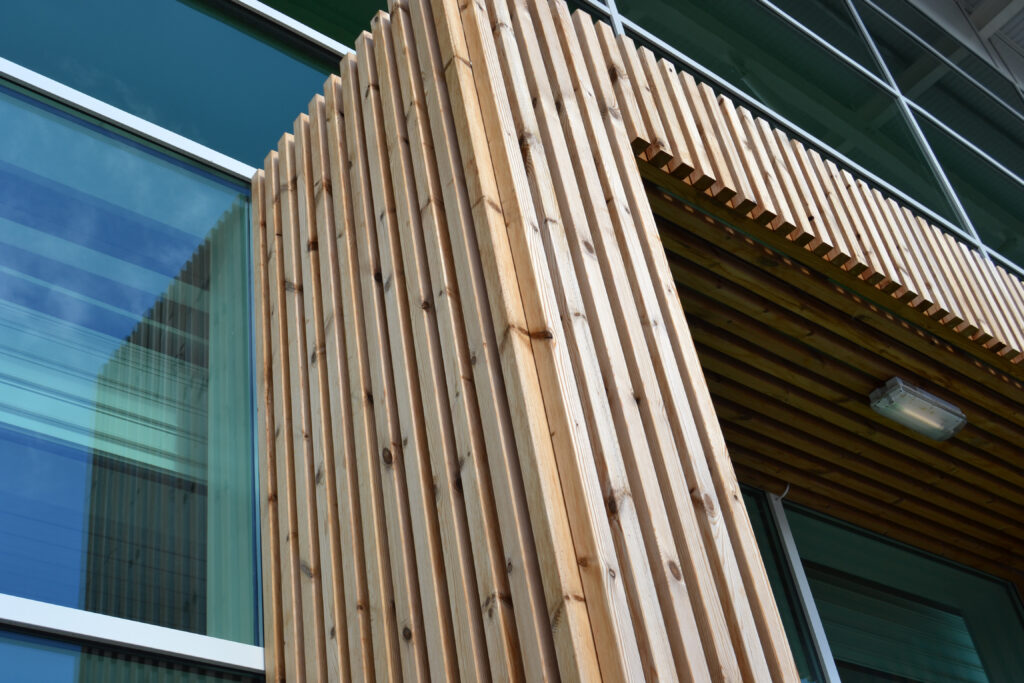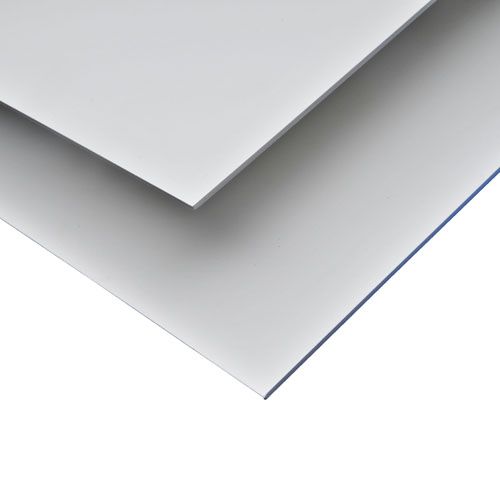External cladding is great for the appearance of your building but that’s not all. You can use it to protect against weather conditions like rain, moisture and strong winds. It can also help protect against temperature fluctuation thanks to its insulation benefits.
Through this guide, you’ll learn more about external cladding. You’ll discover its benefits, uses and more external cladding ideas to make a more informed decision when you purchase.
Table of contents
- What is external cladding and what does it does it do?
- Benefits of external cladding
- Best material for external cladding
- Is external cladding waterproof?
- What is rainscreen cladding?
- What is weatherboard cladding?
- Is external cladding fireproof
- How to measure PVC cladding
- Will you need planning permission for external cladding?
- What to do to maintain cladding
What is external cladding and what does it do?
We add external cladding to buildings to enhance their aesthetics. It also protects buildings from the elements and improves thermal insulation.
Historically, the latter two benefits were the main reasons for fitting exterior cladding panels. These days the aesthetic appeal of cladding outweighs building performance.
You can revamp a property can with many types of cladding, including brick, aluminium and PVC. The material you choose depends on the finish you want to achieve and the budget you have in mind.
Having said that, you’ll find adding external cladding is a quick method of transforming the look of your home.
You can read more about cladding in our handy guide, which includes further information on cladding materials and choices.
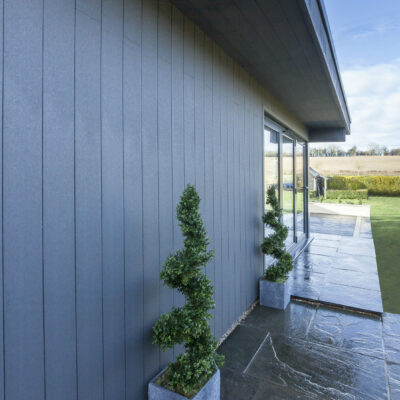
What are the benefits of external cladding?
One of the most popular materials used to clad properties is uPVC.
Exterior uPVC cladding differs slightly from PVC as it’s un-plasticised. This makes uPVC more rigid and ideal for external use, where you need more resistance. It’s extremely cost-effective, requires minimal maintenance and has a smart appearance.
There’s a wide range of colours to choose from, and you’ll find complimentary trims available. Perfect for reviving tired windows and doors.
What is composite cladding?
If you’re after a more rustic finish, composite cladding is an avenue worth exploring. It is typically constructed from various materials, including:
- Wood
- Wheat fibres
- Concrete mixes
This not only looks impressive but is good at controlling sound too.
By far the biggest advantage of using composite cladding is the aesthetic appeal. The property will look like it’s clad in natural wood, but won’t need the upkeep associated with authentic wooden cladding.
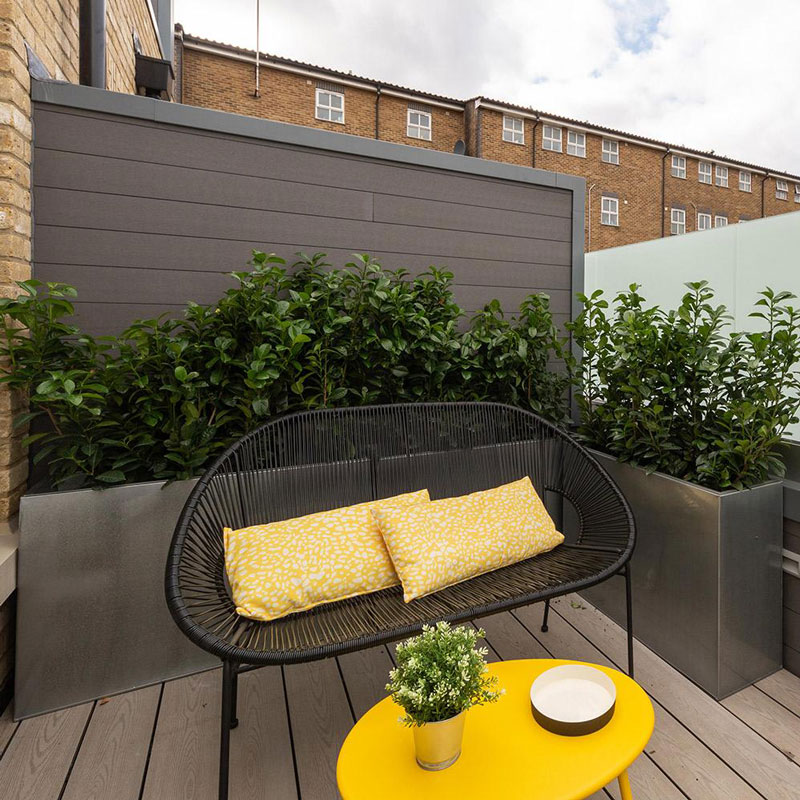
Which material is best for external cladding?
Traditionally, stone and timber were some of the most popular cladding choices on the market. In recent years, uPVC cladding has seen a surge in demand.
UPVC needs minimal maintenance and is a budget-friendly option. This makes it an attractive choice for homeowners. Offering more choice when it comes to types of cladding.
Composites are following a similar trend. Thanks to their durability and user-friendly installation process.
uPVC cladding
Both uPVC and PVC cladding look great. They can easily transform a property and need little to no maintenance from the owners. An inexpensive choice of cladding, homeowners have the flexibility to customise the finish by selecting a colour from the available ranges.
However, it’s worth noting that this type of cladding can discolour over time. To avoid this, buy pre-treated uPVC cladding that has to prevent discolouration.
Real wood cladding
Wood cladding adds rustic charm to a property, which does look very attractive. The cladding itself is fitted in individual pieces. This means the installation process will be longer and more expensive compared with PVC cladding.
There are many benefits to using real wood cladding. It not only looks good but improves the longevity of a building. It is also one of the most environmentally friendly exterior cladding options.
Cedar shingles are a great choice of wooden cladding. It has one of the lowest carbon footprints of any building product. As well as a lifespan of around 50 years and a natural resilience to decay. They’re a real contender for authentic external cladding.
Alternative external cladding options
External cladding is available in a variety of forms. This includes tile, metal and glass, effectively transforming properties.
Tile and glass cladding are extremely versatile alternative cladding. Tiles can provide a smooth or textured finish. Glass is available in many styles and shapes.
Metal cladding is one of the most modern textures on the market. It is often used in a particular artistic style and found in steel or aluminium. It’s also well-known for its durability, which means it’s not susceptible to wear and tear.
Is external cladding waterproof?
All external cladding will offer a degree of protection from the elements, but this varies depending on the material.
Composite cladding or PVC cladding is best if you live in an area with high rainfall. These choices are also suitable if you want full protection for your property against adverse weather conditions.
Both these substances are completely waterproof. Ensuring an extra layer of protection from bad weather.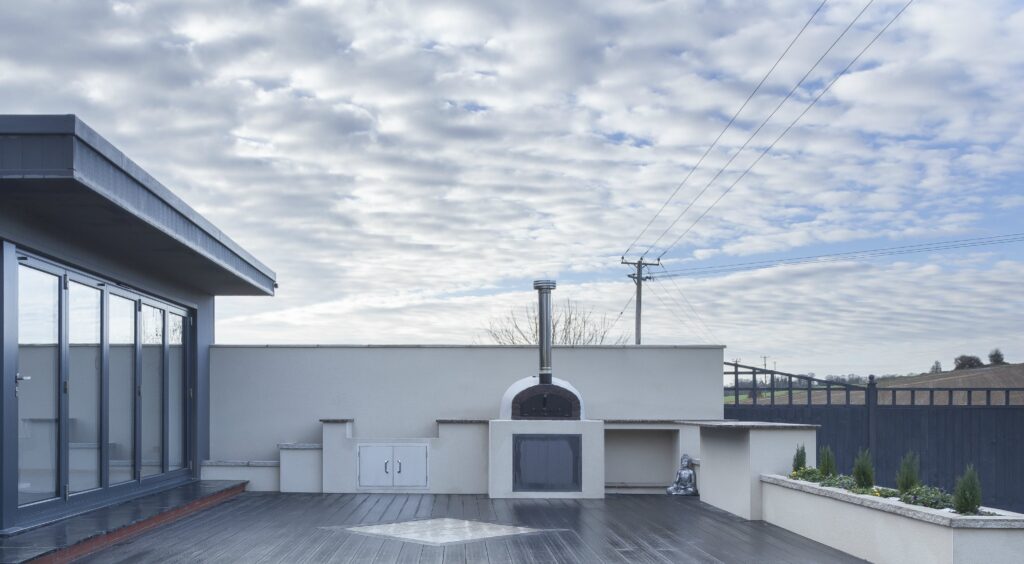
What is rainscreen cladding?
Rainscreen cladding is the term given to rear-ventilated cladding. This attaches to the outer skin of a new or existing building.
This system is a form of double-wall construction. It has a twofold purpose. The outer layer to keeps out the rain and the inner layer provides thermal insulation. There are many advantages to adding rainscreen cladding to a building. Including:
- Helping avoid condensation and humidity.
- Extending the facade’s lifetime.
- Improving thermal and acoustic insulation.
Rainscreen cladding requires virtually no maintenance and increases energy efficiency. The cladding makes cooling the building easier during the summer months. While heating the property more efficiently throughout the winter.
In fact, reports have shown that energy bills reduce by as much as 40%. Thanks to these energy-efficient properties.
What is weatherboard cladding?
Weatherboard cladding is the process of using lengths of board to clad the outside of a property. They are traditionally made from timber.
We tend to associate weatherboard cladding with barns, church towers and mills in the UK. It is also very popular in coastal regions as it’s extremely effective in damp climates.
Weatherboard cladding is now available in uPVC and fibre cement. It’s lightweight, quick to install and famed for its weather resistance. It requires little input from homeowners too, needing minimal maintenance. If there is deterioration, this can be easily rectified.
Is external cladding fireproof?
One of the most important considerations is the fire rating of external cladding.
Modern materials such as PVC and composites offer much higher fire protection. This is lower when compared with traditional materials, such as timber.
Many types of external cladding are classified with a ‘surface spread of flame’. This is designed to slow and control the spread of fire.
Fire rated (FR) cladding has a higher classification of limited combustibility or non-combustibility.
It’s vital the cladding panels conform with European Standards EN-13501-1. So manufacturers label external cladding panels from A1 to D according to their combustibility:
- A = Non-combustible materials
- B = Combustible materials: very limited contribution to fire
- C = Combustible materials: limited contribution to fire
- D = Combustible materials: medium contribution to fire
In December 2018, the government altered building regulations for combustible materials. This legislation prevents combustible materials from being applied to the external walls of new buildings over 18 metres in height. This rule applies to all new:
- Residential housing
- Hospitals
- Care premises
- Student accommodation
It also limits the use of timber materials in high-rise constructions.
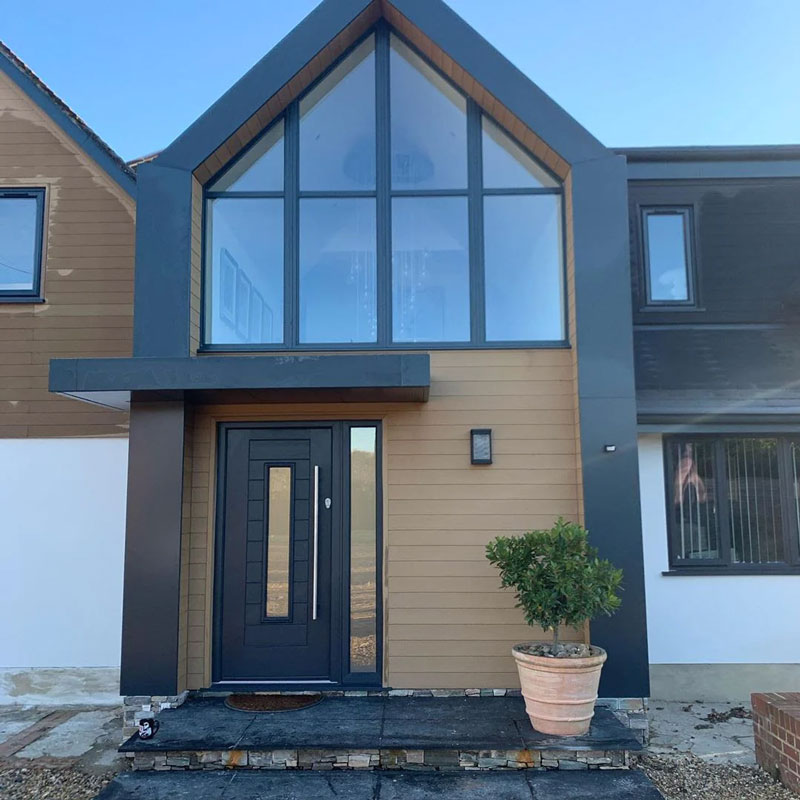
How to measure PVC cladding
If you’re a DIY pro, installing PVC external cladding is a job you can do yourself.
The method changes depending on which material you’re using. Having said that, PVC is one of the most user-friendly cladding options if a do-it-yourself project is what you have in mind.
Begin by measuring the square meterage of cladding required.
For straightforward spaces, such as exterior walls, measure the length and height. Then multiply the two measurements together.
A gable is slightly more complicated. Measure the barge boards, multiply them together and then divide by two to achieve the correct measurement.
It’s a good idea to allow an extra 10% for cuts and wastes, to ensure you have enough material to complete the job.
When it comes to installing the cladding, we recommend you always refer to the manufacturer’s guidance.
How to install PVC cladding
You can install PVC cladding in four simple steps. All you need is:
- A broom/sweeping tool
- Cladding pins
- Breathable moisture barrier
- Vertical fixing trims
- Cladding
- Universal U trim
Step one: Clean the area
Ensure the area is clear of debris and prepared for the cladding.
Step two: Fix the trims in place with a breathable moisture barrier behind them
Use appropriate cladding pins to attach a starter trim at the bottom of the area you wish to clad.
Step three: Engage the back lip of the cladding board into the starter and vertical fixing trims
You can secure these into place with pins. Our top tip is to start in the centre and work outwards. Then attach the new lengths of external cladding boards to the ones installed before.
Step four: Finally, fit the top cladding board
A universal U trim along the board will give the best finish and the use of packing behind it will ensure the face of the cladding is correctly aligned.
Will you need planning permission for external cladding?
It’s unlikely you’ll need planning permission to add external cladding to a property. Having said that, there are a few scenarios in which you’ll need to seek planning approval.
You’ll have to go through the relevant channels to seek planning approval if you live in:
- A listed building
- A conservation area or
- An Area of Outstanding Natural Beauty
These are just an example. So it’s always best to check with your local council before moving forward with your fitting.
For the majority of properties, the addition of external cladding falls under your Permitted Development Rights. These have been granted by parliament. However, these rights do not apply to flats and maisonettes.
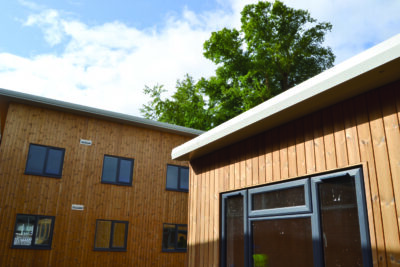
What to do to maintain cladding
To improve the aesthetic appeal and lifespan of external cladding, we recommend giving it a thorough clean from time to time.
Surfaces such as wood and metal can be difficult to clean properly. So it can be worth calling in an expert to reduce the risk of accidental damage.
PVC is much more user-friendly and as long as you invest in the correct protection, it’s safe to wash by hand. Investing in a good PVC cleaner is helpful for cutting through dirt and stains. You can also use it on PVC window frames and doors too.
Now you’re aware of what external cladding is and the products on offer, head on over to our range at Roofing Superstore. Explore the different types of cladding and find something suited to your requirements.




